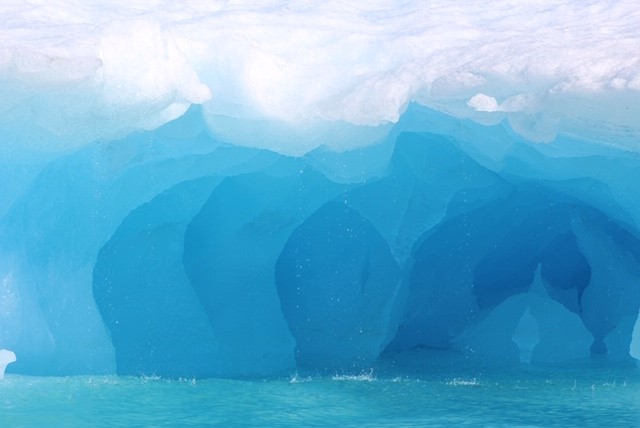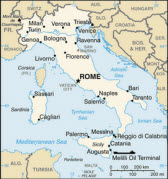Every month, climate scientists make new discoveries that advance our understanding of climate change’s causes and impacts. The research gives a clearer picture of the threats we already face and explores what’s to come if we don’t reduce emissions at a quicker pace.
Our blog series, This Month in Climate Science, offers a snapshot of the month’s significant scientific literature, compiled from some of the leading peer-reviewed journals. This edition explores studies published in September 2019. (To get these updates delivered right to your inbox, sign up for our Hot Science newsletter.)
Recent Extreme Events
This past month brought alarming signs of a changing climate, many of which are in line with projections of a warming world:
- Hurricane Lorenzo broke records; no category 5 storm had previously been recorded as far east and north in the Atlantic.
- Hurricane Dorian was the most powerful storm on record to hit the Bahamas, destroying almost half the island’s homes.
- Tropical Depression Imelda caused catastrophic flooding in southeast Texas. A rapid analysis performed by World Weather Attribution found that human-induced climate change increased the intensity and likelihood of the extreme rainfall event.
- A marine heatwave spread in the Pacific, with waters off the western US coast 5 degrees F warmer than usual – the second largest heatwave in the northern Pacific in the last four decades.
- Queensland in northeastern Australia experienced devastating forest fires. Fires moved rapidly through the rainforest, leading to school closures and burning many structures.
- A mountain in Sweden lost its title as highest peak as warm temperatures melted a third of its glacier, which had added to its height.
- A funeral was held for Pizol glacier in the Swiss Alps, which has almost disappeared.
- Italian authorities warned that part of a glacier on Mont Blanc would collapse, with 9 million cubic feet of ice at risk of breaking away; they evacuated homes and huts and closed roads.
- Dengue fever is a new threat to Kathmandu, Nepal, where the disease had previously been rare; earlier cases were usually seen at warmer, lower elevations.
- Extreme events in the first half of 2019 displaced a record seven million people.
Oceans
Ice
- IPCC report also documents rapid loss of snow and ice: The IPCC’s Special Report on the Ocean and Cryosphere in a Changing Climate finds that Arctic sea ice extent in September (when sea ice extent is at its minimum) declined about 13% per decade. Ice sheets and glaciers are losing ice around the world, and all mountain regions have seen a decline in depth, extent and duration of snow cover. The Arctic has warmed more than double the global average in the last two decades. For more, see: https://www.wri.org/blog/2019/09/4-things-know-about-ipcc-special-report-ocean-and-cryosphere
- Third lowest Arctic sea ice extent for September on record: The National Snow and Ice Data Analysis found that Arctic sea ice extent was the third lowest in the more than four-decade record. Warm conditions were found across the Arctic Ocean and surrounding lands in September, with air temperatures over the ocean region 2 to 4 degrees C (3.6 to 7.2 degrees F) above the 1981-2010 reference period for the month.
- New source of meltwater from Greenland’s interior: In Greenland, meltwater on the surface is flowing into snow and refreezing, causing the growth of ice slabs, a new study finds. Given the rapid warming and growing volume of meltwater, these ice slabs have been thickening, with some expanding from 5 to 7 meters (16 to 23 feet) in just five years. As the ice slabs thicken, water can no longer percolate down into the snow and instead moves to the ocean. Interior regions had not contributed such a large amount of run off in prior years and the new findings suggest a doubling of runoff from Greenland’s interior by the end of the century.
- Widespread development of meltwater lakes on East Antarctica: A study released this month finds that East Antarctica is full of supraglacial lakes, which sit at the glacier’s surface. Before this study, little was known about the lakes’ distribution in East Antarctica. Because such lakes decrease the reflectivity of the surface and increase absorption of solar radiation, they can hasten melting.
- Meltwater on Antarctica speeding up glacial flow: Scientists have found that surface meltwater, which is now widespread across the Antarctic Ice Sheet, is leading to very rapid and large accelerations of outlet glaciers. Such shifts have not been included in models to date.
Species and Ecosystems

Flock of birds at Elkhorn Slough, California. Photo by Don DeBold/Flickr
- Devastating decline of North America’s birds: A new study finds that since 1970 three billion birds in North America – 30% of the total population – have been lost. Many species and habitats have been negatively affected, including once-common and widespread species. The author notes that their findings signal an urgent need to address threats to bird species, including climate change, habitat loss, intensification of agriculture, and other drivers. Otherwise, the continent’s birds could face “potential collapse.”
- Warming leading to collapse of desert bird community: Studying the Mojave Desert, scientists found that bird species have declined significantly over the past century, with those in the hottest, driest sites the worst off because there isn’t enough water to cool their bodies. As temperature increases, birds need more water to cool down, and in some areas, this water is either unavailable or some bird species are becoming stressed because they have to work harder to get moisture-rich food, such as insects.
- Focus on temperature will mask marine species’ vulnerability: Modelers have found that if global climate model projections focus largely on temperature’s effects on marine species’ ranges, they will miss much more complex interactions that play large roles in determining species’ ranges and viability. Other factors, such as salinity and sea level, can make projections more accurate and improve management. Such multifactor models led to bleaker forecasts, with Atlantic cod disappearing altogether in multifactor projections compared with having diminished habitat in simpler models.
- Overlooked threat to Red Sea corals: Many reef-building corals reproduce through the simultaneous release of eggs and sperm in water. A new study of corals in the Red Sea finds that the synchrony of such spawning events has become mismatched so that there are fewer new juvenile corals and aging coral colonies. While there could be several factors leading to such effects, including pollution, the authors note that sea temperatures have risen 0.3 degrees C (0.5 degrees F) per decade in the region.
- Salamanders affected by streamflow changes: Research focusing on salamander populations in New Hampshire has found that changes to streamflow have impacted salamanders’ ability to survive. The abundance of adults of the salamander species studied declined by about 50 percent over the last 20 years. Climate change is expected to bring increased variability to streamflow.
Extreme Weather and Climate
- Estimated costs of U.S. extreme weather: A study published this month estimated the costs of 10 major extreme weather events that hit the United States in 2012, including forest fires, extreme heat and harmful algal blooms. The events lead to almost 1,000 deaths and $10 billion in health-related costs.
- Urban heat island effect: Analyzing summer temperature data for more than 30,000 cities, scientists developed a model to understand the potentially lethal urban heat island effect. They found that the amount of rainfall and population are large determinants of urban heat island effect. They also found that solutions will depend on the location of the city: in dry regions, increasing green cover and surface reflectivity can be effective, whereas in tropical cities such techniques may not be as effective, requiring novel approaches.
- Heat exposure impacts labor productivity: Scientists estimated significant economic losses will result from declines in labor productivity due to extreme heat. We may already be seeing a 2% loss in total GDP due to losses in labor productivity with current levels of warming. Low income countries will be about nine times more adversely impacted than higher income ones.
Agriculture

Wheat field, Wisconsin. Photo by Chris Ford/Flickr
- Wheat at risk in a changing climate: Modelers estimate that without emissions cuts, up to 60% of the current area used to grow wheat will witness severe water scarcity events that occur simultaneously – drought affecting large areas of land at the same time – by the end of the century. Currently, 15% are affected by such simultaneous events. While emissions reductions will help, even if warming is limited to 1.5 to 2 degrees C (2.7 to 3.6 degrees F), the number of simultaneous severe water scarcity events will double by 2041 to 2070. The Food and Agriculture Organization has projected a more than 40% increase in demand for cereals by mid-century. Accordingly, this study sheds light on future risks to global food security as wheat production may not be able to keep up with demand.
- Mixed news for bananas in a changing climate: A new study found that for 27 banana- producing countries, accounting for 86% of global banana production, annual yields have increased about 1.4 tons per hectare since 1961. However, the gains to date could disappear in the future. Global yield gains are projected to decline between 0.2 and 0.6 tons per hectare by mid-century (under medium and high emissions scenarios respectively).
- Climate change impacting maple syrup production: Studying several sugar maple stands in eastern North America, researchers found that with every 1 degree C (1.8 degrees F) of March warming, sap collection advanced by more than four days. They expect by the end of the century, the midpoint of sap collection season will be one month earlier. They also expect the region with the most sap flow will shift northward by 400 km (nearly 250 miles).
Other impacts
- Coal plants in Asia to face water stress: Coal fired power plants are expanding rapidly in Asia. A study published this month explores the impact of climate change and future water availability to quantify water constraints on coal-fired electricity generation in the region, as water is needed to cool power plants. It found that coal-fired power plants in Southeast Asia, parts of India and China, and Mongolia will face significant water constraints. Carbon capture technology would require even more water.
Emissions
- Hydroelectric dams require careful planning: A study examining hydropower reservoirs in the Amazon finds that if all 351 proposed dams are built across five countries in the Amazon basin, emissions from the reservoirs would increase about fivefold. Hyrdoelectric dams can lead to significant emissions given the conversion and flooding of ecosystems, among other effects. About a quarter of the proposed lowland dams are more carbon-intensive than coal-fired power plants over a 20-year time horizon.



